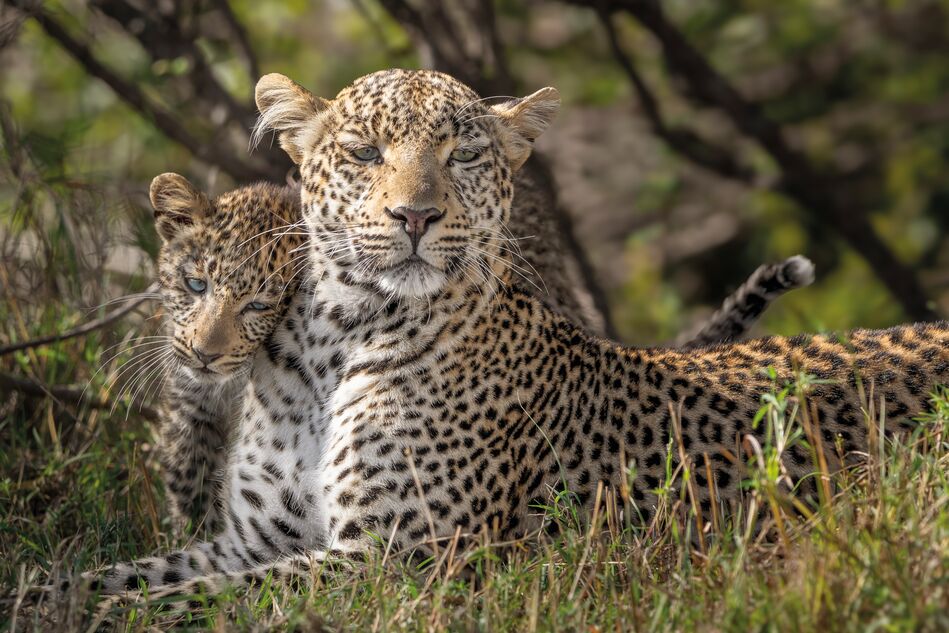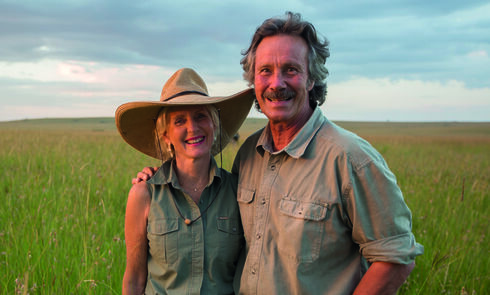The last place on Earth
Acclaimed wildlife documentary makers, writers and photographers Jonathan and Angela Scott talk Tanazania and nominate their top safari destinations.
Published 25 June 2025
When my nephew asked me the best place in Africa to enjoy a family safari he had already narrowed the choice down to Kenya, Tanzania, Botswana and South Africa, with Zambia and Zimbabwe close on their heels as the pick of countries best showcasing the continent’s charismatic wildlife. It certainly makes for an animated discussion around the campfire. As much as Angie and I have loved our safaris to Botswana’s Okavango Delta – the Jewel of the Kalahari – with its spectacular palm-fringed islands and crystal clear waterways, it wasn’t our first choice. Nor was South Africa with its swish private game reserves offering the “big five” experience promising lion, leopard, buffalo, rhino and elephant – plus the possibility of an extension to savour the mouth-watering wine country of the Western Cape.
For a first safari experience it has to be Kenya or Tanzania, boasting the savanna Africa that I had feasted my eyes on as a child growing up in England. If we were to narrow it down even further then we would choose northern Tanzania where Angie grew up, with good road and air connections to safari hotspots and a landscape that is easy on the eye with great access and visibility for the game-watching. Top tip, in general try to spend a minimum of three nights wherever you go to ensure you really soak up the experience. Lake Manyara is a great starting point, with elephants, tree-climbing lions and spectacular aquatic birdlife. Then Ngorongoro Crater, where one or two nights might suffice in the world’s largest intact volcanic caldera, a massive crater formed by a collapsed volcano often described as the 8th Wonder of the World. It’s inhabited by elephants, black rhinos, large clans of spotted hyenas and impressive dark-maned lions. And the finale? If ever there was a place demonstrating the unity of all life, then that place is the Serengeti, The Last Place on Earth according to author Harold Hayes. Certainly, there is nowhere quite like it, nowhere with such a broad sweep of landscape filled with so many animals.

When I set out overland through Africa in 1974 I was galvanised by the thought of a safari to the Serengeti. Fifteen years earlier, I had sat in a London cinema mesmerised by Serengeti Shall Not Die, a film highlighting the wonder of the land of the great migration with its 1.2 million wildebeest and 200,000 zebras, whose endless wanderings and spectacular river crossings are one of the natural world’s greatest spectacles. I could barely contain my excitement as our Bedford truck crossed from Rwanda into Tanzania, skirting the shores of Lake Victoria before rumbling up to the entrance gate marked Serengeti National Park. I was in heaven, my heart bursting with the realisation that there was still a place like this where animals of every description roamed free, a land of high steppes and dry heat with chill nights to temper the equatorial sun. It wasn’t long before we saw our first lions (there are still around 3,000 of these big cats in the 25 sq km Serengeti-Mara ecosystem) as we headed east towards the ancient granite outcrops of the Masai Kopjes. Somewhere along the languorous course of the Seronera River, in the centre of the park with its three-billion-year-old rocks, we came across a leopard, the animal I had most wanted to see, the most sublimely beautiful and graceful of all the big cats.
Many visitors to the Serengeti hope to witness wildebeest and zebras crossing the Mara River, an event that ranks alongside the thrill of seeing coastal brown bears feasting on salmon in Alaska or a breeding colony of emperor penguins tending their chicks in remotest Antarctica. The best time to witness a crossing from the northern Serengeti is typically between mid-July and early September, when the main body of the migration is moving north towards the Maasai Mara in Kenya where Angie and I have spent so many years following the lives of the big cats.

Angie grew up in Dar es Salaam, the largest city and financial hub of Tanzania, nestled along the calm blue waters of the Indian Ocean. It was the start of her lifelong love of the sea, out each morning exploring the coral reefs with brother David long before the sun rose crisp and golden, feasting on a breakfast of ripe pawpaw, wild mangoes and fresh seafood. It’s hard to imagine a better finale to a safari adventure in East Africa than a few days spent soaking up the sun and cooling breeze along the Tanzanian coast, with the chance to sample idyllic white coral beaches and island retreats such as Zanzibar, with Stone Town considered among the oldest and best-preserved Swahili settlements in East Africa, dating back to the 14th century.
And for your next Tanzanian safari adventure? Explore the southern wilderness areas of Selous Game Reserve and Ruaha National Park, together with a visit to Mahale Mountains and Gombe National Parks on the eastern shores of Lake Tanganyika, trekking in the footsteps of wild chimpanzees. Heading out on safari soon becomes a lifelong obsession!
